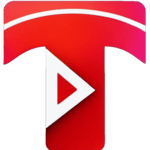- Tubelator AI
- >
- Videos
- >
- Education
- >
- Workflow #1 HC Model Preparation - GeoProfessional Machine Control
Workflow #1 HC Model Preparation - GeoProfessional Machine Control
Join Fredrik Bergner and Mattias Henriksson from Hexagon Larka SBG in this webinar series as they guide you through the model preparation process for machine control in GeoProfessional. Learn valuable insights and tips for a seamless workflow.
Video Summary & Chapters
No chapters for this video generated yet.
Video Transcript
Hello, hello, then we'll see. I think it should work in any case. I close the window there.
Now we'll see. I had some technical problems.
Hi and welcome! I would like to say first of all to this webinar that we are going to start a small workflow series
This is the first episode and we start on the one hand. I'm Fredrik Bergner and I work at Hexagon Larka SBG
And with me is Mattias Henriksson who will take us through this presentation
Mattias has handled and put up a flow of how we prepare models in GeoProfessional for the machine control.
Excuse my voice today, it's a bit crass. 30 minutes in regular order, so now between 9 and half past ten.
We save questions, we take them at the end, but you can always write in questions on this little questionnaire
I keep a little check on them and then at the end of the webinar, I think Mattias has saved some time so that we can answer those questions
We can also turn on the microphones if you want to put them directly
So you can raise your hand and we turn on the microphone. Otherwise, it's good to write in and I'll read them out for you
Mathias, would you like to take over?
Yes, I can.
Then we just need the right screen too
Clean, so. Yes. Data Prep eProfessional, it's about making models
Especially in this context for MC1, but many of the things I go through fit a little bit to all possible
But today we will focus on MC1 and the flows that best fit there
First, let's talk a little about model purposes
What does it look like when we work? We have different things we build
The first one can be a road, parking and roundabouts, which I have in this first slide
If we start with roads, we are often interested in road lines, we want to be able to see sectional length and dimensions
And in that context, our road models are best suited if you are now going to bring a sectional measurement
Because it becomes easier to handle and describe where the object is
If we look at a parking lot, it has a lot to do with demolition
And there you may work more with not sectional measurements
So there we have more surface models, our terrain models, cross-sectional for ridges.
You want to be able to control the ridges so that even some points and such can fit in there.
And I forgot, for the line model there, LandXML fits best. There is a method available.
to handle it in the LandXML format.
For parking, you can have a few different ones.
LandXML is very good for terrain models.
But even if you want to use a color and shape-related appearance,
you might need a .dvg or .dxf file.
So it's not so much long-striped objects that weigh in a parking lot.
The roundabout is a bit similar. We have these objects that are round, long, shaped
and the terrain model may be best suited for it, even there, landxml and dvg, where we can put in a cross-section.
Next, I'll take as an example the golf course, there we have very little cross-section, it should be round and nice and format and so on
So there the terrain model fits even more.
There are few crossings, so you don't have to think so much about crossings,
but even there, LandXML and DXF fit quite well.
And as you can hear, there is a lot of focus on LandXML and DXF.
Ponds, even there, it can be a bit rounded and square,
It's a bit angular, depending on how the dams look. But also there are a few break lines that describe what's going on.
It should be a bit angular. But even there we have LandXML and DXF.
The last thing we look at as models that we can get out for is the house foundation.
We have very strict break lines, so they are actually good to have with you
But it is also handled by LandXML DXF
If you were to get data or make your own data, then it is important that you look that there is nothing strange with that data
And if you look at our basic data, if you import data into GEO, then we call it basic data
Then we have some different methods to determine that it is okay with the data


 Install Tubelator On Chrome
Install Tubelator On Chrome






